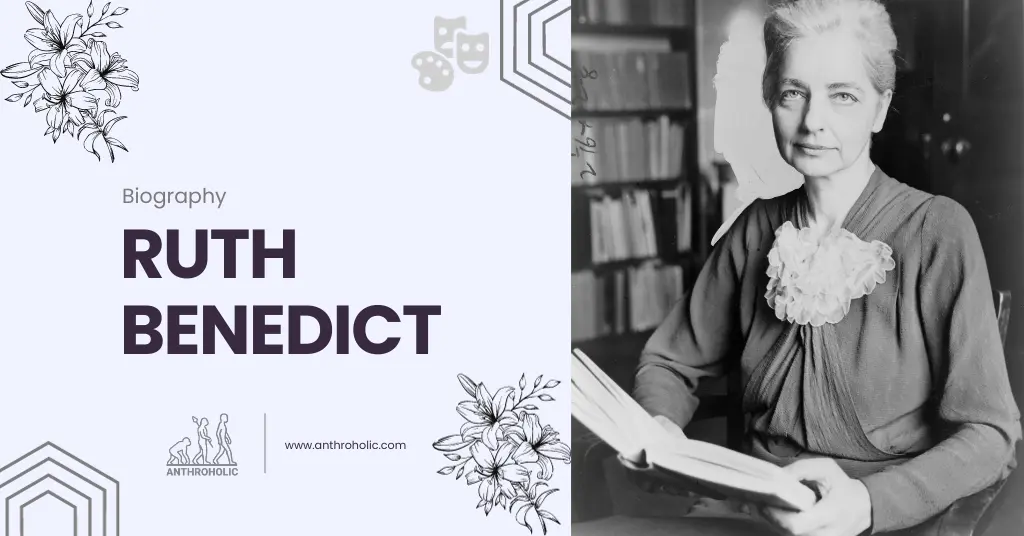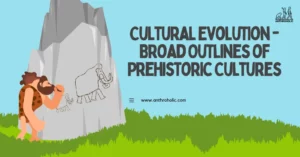AI Answer Evaluation Platform Live Now. Try Free Answer Evaluation Now
Ruth Benedict
Ruth Benedict, an illustrious figure in the realm of cultural anthropology, remains a subject of fascination and study in the academic world. Born in 1887, Benedict transformed the field of anthropology through her innovative theories and extensive fieldwork. Her contributions have been pivotal in shaping the understanding of cultural relativism and the dynamics of human societies.

Early Life and Education of Ruth Benedict
Ruth Fulton Benedict was born on June 5, 1887, in New York City. The youngest of three sisters, she experienced a childhood marked by frequent moves and the untimely death of her father when she was just a toddler. These early experiences of loss and displacement had a profound impact on her, shaping her perception of the world and its varied cultures.
Benedict’s academic journey began at Vassar College, where she pursued a degree in English Literature. It was during these formative years that she developed an interest in anthropology, influenced in part by the burgeoning field of social sciences. Despite the societal expectations of the early 20th century, which often limited women to domestic roles, Benedict was determined to carve out her own path in academia.
Academic and Professional Career
After completing her undergraduate degree, Benedict’s academic pursuits led her to Columbia University, where she met Franz Boas, the father of American anthropology. Under Boas’s mentorship, Benedict’s interest in cultural studies flourished. She earned her Ph.D. in anthropology in 1923 and soon became a central figure in the Columbia University anthropology department.
Benedict’s academic career was marked by her innovative approach to cultural anthropology. She challenged the then-prevalent notion of cultural determinism, proposing instead that cultures developed distinct patterns based on their unique histories and environments. This perspective was revolutionary, emphasizing the importance of understanding cultures on their own terms rather than through a Western-centric lens.
As a professor at Columbia, Benedict mentored many students who would go on to become prominent anthropologists, including Margaret Mead, with whom she shared a close professional and personal relationship. Benedict’s influence extended beyond academia, as she actively engaged in applying anthropological insights to contemporary social issues, including gender roles and race relations.
In the following sections, we will delve deeper into Benedict’s major works and theories, her fieldwork methodology, and the personal challenges she faced, culminating in an assessment of her lasting impact on anthropology and contemporary culture.
Major Works and Theories by Ruth Benedict
Ruth Benedict’s most influential work, “Patterns of Culture” (1934), marked a paradigm shift in anthropology. In this seminal text, she introduced the concept of “culture as personality writ large,” positing that each culture has a dominant pattern or ‘personality’ which influences the behavior and personality of individuals within it. This work, based on her comparative studies of Native American cultures, particularly the Zuni, Dobu, and Kwakiutl tribes, challenged the prevailing notion of cultural hierarchy and advocated for the appreciation of cultural diversity.
Benedict’s theories were rooted in the concept of cultural relativism, a viewpoint that suggests each culture must be understood in its own context, without imposing outside judgments. This perspective was a direct counter to the ethnocentric views dominant at the time and has since become a foundational principle in anthropology.
Her other notable publications, like “The Chrysanthemum and the Sword” (1946), which studied Japanese culture, further cemented her reputation as a cultural analyst who could provide deep insights into foreign societies, particularly useful during the World War II era.
Fieldwork and Research Methodology
Benedict’s approach to fieldwork was revolutionary. She emphasized the importance of empathy and understanding in studying cultures, arguing that an anthropologist must immerse themselves in the culture to truly grasp its nuances. Her fieldwork was characterized by a blend of direct observation, participation, and extensive interviews, a methodology that was quite advanced for her time.
Her work among the Native American tribes is particularly noteworthy. Benedict not only documented their rituals and social structures but also delved into the psychological aspects of their culture. She was one of the first anthropologists to focus on the role of individual agency within cultural constructs, a perspective that provided a more nuanced understanding of cultural dynamics.
Personal Life and Challenges
Ruth Benedict’s personal life was as complex as her professional one. She faced significant challenges, not least of which was navigating a predominantly male-dominated field. Her determination and resilience paved the way for future generations of women in anthropology.
Benedict’s personal relationships, particularly with her mentor Franz Boas and colleague Margaret Mead, were instrumental in her development as an anthropologist. These relationships, steeped in mutual respect and intellectual exchange, provided her with a supportive network that was crucial for her success.
Her personal writings, including her poetry, reveal a deeply introspective and sensitive individual, grappling with issues of identity and social norms. Benedict’s exploration of gender roles and her own experiences as a woman in academia added a rich layer to her understanding of cultural dynamics.
Legacy and Impact
Ruth Benedict’s legacy in anthropology is profound. She not only contributed to the development of cultural anthropology but also influenced fields like psychology, sociology, and folklore. Her work continues to be a touchstone for students and scholars exploring cultural diversity and human behavior.
Benedict’s emphasis on cultural relativism has had a lasting impact on how cultures are studied and understood. Her advocacy for the appreciation and understanding of cultural diversity has resonated through the decades, influencing not just academic discourse but also policy-making and social awareness.
Criticisms and Controversies
Despite her significant contributions, Benedict’s work was not without its critics. Some contemporaries and later scholars have critiqued her methodology, particularly her reliance on secondary sources for some of her work on non-American cultures. Others have pointed out oversimplifications in her cultural analyses, arguing that her theories sometimes lacked nuance.
However, these criticisms must be contextualized within the time and constraints Benedict worked under. Her approach was pioneering for her era and laid the groundwork for more detailed and nuanced studies that followed.
Conclusion
Ruth Benedict’s journey as an anthropologist was marked by innovation, resilience, and a deep commitment to understanding human cultures. Her work transcended academic boundaries, influencing not just anthropology but also the way we think about and engage with different cultures. Benedict’s legacy is a testament to the power of empathy, understanding, and respect in the study of the diverse tapestry of human society. As we continue to navigate a globalized world, her insights into cultural patterns and the importance of cultural relativism remain more relevant than ever.



